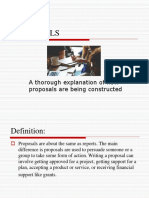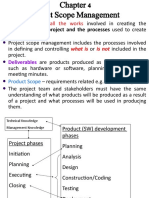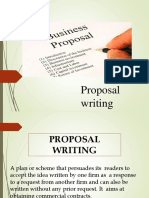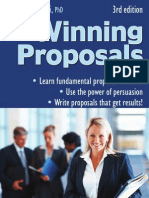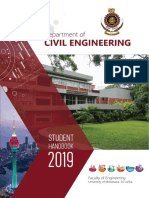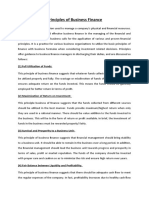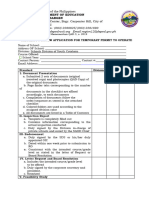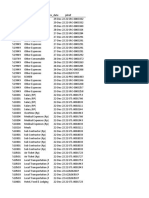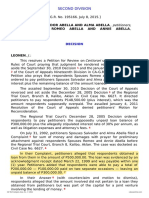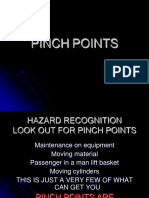100% found this document useful (1 vote)
886 views7 pagesHow To Write A Technical Proposal
The document provides guidance on how to write a successful technical proposal in 11 steps:
1. Include an executive summary that presents an overview of the proposed work.
2. Add a table of contents to show the proposal's structure and topics.
3. Provide technical background on the problem, opportunity, or situation.
4. Detail the technical approach, resources required, and estimated costs.
5. Mention your capabilities and the procedures that will be followed.
6. Anticipate the benefits of completing the proposed project.
The document emphasizes that technical proposals require understanding the audience and problem, and translating technical requirements into a customer-focused proposal that pitches your solution. Different types
Uploaded by
Motasem AlMobayyedCopyright
© © All Rights Reserved
We take content rights seriously. If you suspect this is your content, claim it here.
Available Formats
Download as PDF, TXT or read online on Scribd
100% found this document useful (1 vote)
886 views7 pagesHow To Write A Technical Proposal
The document provides guidance on how to write a successful technical proposal in 11 steps:
1. Include an executive summary that presents an overview of the proposed work.
2. Add a table of contents to show the proposal's structure and topics.
3. Provide technical background on the problem, opportunity, or situation.
4. Detail the technical approach, resources required, and estimated costs.
5. Mention your capabilities and the procedures that will be followed.
6. Anticipate the benefits of completing the proposed project.
The document emphasizes that technical proposals require understanding the audience and problem, and translating technical requirements into a customer-focused proposal that pitches your solution. Different types
Uploaded by
Motasem AlMobayyedCopyright
© © All Rights Reserved
We take content rights seriously. If you suspect this is your content, claim it here.
Available Formats
Download as PDF, TXT or read online on Scribd
/ 7
